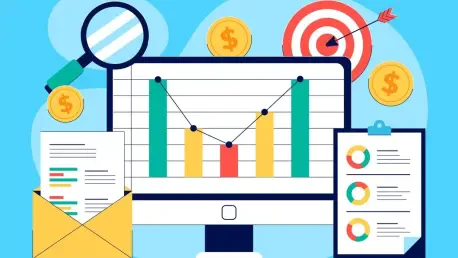Diving into the ever-evolving world of SEO, we’re thrilled to sit down with Anastasia Braitsik, a global leader in SEO, content marketing, and data analytics. With her finger on the pulse of digital marketing trends, Anastasia brings unparalleled insight into the recent seismic shifts in the industry, particularly Google’s decision to discontinue the n=100 SERP parameter in September 2025. This change has sent shockwaves through the SEO community, impacting tools and strategies with a staggering cost increase for data access. In this conversation, we’ll explore the implications of this update, how platforms are adapting, the broader challenges facing the industry in 2025, and what it all means for businesses relying on search data to stay competitive.
Can you break down what the n=100 SERP parameter was and why it played such a critical role for SEO tools?
Absolutely. The n=100 SERP parameter was a feature in Google’s API that allowed SEO tools to pull up to 100 search results with just a single request. This was a game-changer for platforms doing large-scale keyword research, competitor analysis, or tracking rankings. It meant efficiency—both in terms of time and cost. Without it, gathering comprehensive data was much more cumbersome, so this parameter became a backbone for many SEO strategies, enabling tools to deliver deep insights with minimal overhead.
How did this parameter specifically benefit the day-to-day operations of SEO platforms?
For platforms like many in the industry, the n=100 parameter streamlined everything. It let them analyze broad search trends, monitor rankings across numerous keywords, and benchmark against competitors all in one go. Imagine trying to build a detailed picture of search behavior without this—it was like having a wide-angle lens for data collection. Daily tasks like updating dashboards or generating reports for clients became faster and more accurate because they could access a large dataset instantly.
When Google discontinued this parameter on September 14, 2025, what was the initial reaction from SEO platforms?
The reaction was a mix of frustration and urgency. Many platforms were caught off guard by the abruptness of the change. There was an immediate scramble to assess the damage, especially since the announcement and implementation happened on the same day. Social media posts and updates from various tools reflected a sense of disbelief and a rush to communicate with users about potential disruptions, particularly in modules tracking search rankings.
How did this change immediately impact services, especially ranking modules?
The impact was pretty brutal for ranking modules. These systems relied heavily on pulling large batches of search results to track keyword positions accurately. With the n=100 parameter gone, platforms had to make ten separate requests to get the same amount of data, which not only slowed down processes but also spiked costs overnight. For many, it meant their real-time tracking capabilities took a hit, and they had to warn users about delays or changes in service quality while figuring out next steps.
The shift has led to a reported 10x cost increase for SEO tools to access the same data. Can you explain how this cost jump occurs?
It’s quite straightforward but painful. Previously, one API call fetched 100 results. Now, with the parameter removed, tools need to make ten individual requests to gather those same 100 results. Each request comes with a cost, so what used to be a single expense is now multiplied by ten. For companies processing millions of queries a month, this isn’t just a small bump—it’s a massive blow to their operational budgets.
How does this cost increase disproportionately affect smaller SEO companies compared to larger ones?
Smaller SEO companies are really feeling the pinch. They often operate on tighter budgets and may not have the financial cushion to absorb a tenfold increase in data costs. Larger firms, especially enterprise-level platforms, might have more diverse revenue streams or bigger client bases to spread the cost across, so they can adapt more easily. For smaller players, this could mean raising prices, cutting features, or losing competitiveness, which is a tough spot to be in.
Some industry voices suggest Google might be aiming to curb search result scraping with this move. Do you think there’s merit to that perspective?
I think there’s definitely something to it. Google has always been protective of its data, especially as automated scraping and AI-driven content generation have grown. Limiting bulk access through changes like this could be a way to deter bots or unauthorized data collection. It’s not hard to see why they’d want to safeguard their search infrastructure—there’s a lot at stake with how search results are used and potentially exploited.
What past actions or patterns from Google support the idea that they’re tightening control over their data?
Google’s history shows a clear trend of tightening the reins. Over the years, they’ve introduced rate limits, restricted API access for certain data points, and enhanced anti-scraping measures like CAPTCHA challenges for suspicious activity. They’ve also pushed more businesses toward their official, often pricier, channels for data access. These moves suggest a consistent effort to control how their search results are accessed and used, especially by third parties.
How are SEO platforms planning to navigate this new reality after the parameter’s removal?
Many platforms are in problem-solving mode. They’re exploring a range of options, from optimizing how they make requests to reduce costs to rethinking their service offerings. Some are looking at distributed request strategies or staggering data collection to avoid hitting rate limits. Others are reevaluating their pricing models to pass on costs to users without losing their customer base. It’s a delicate balance of maintaining service quality while managing this new financial burden.
With Google’s data access becoming costlier, are there viable alternative data sources for SEO tools, or does Google remain the benchmark?
Google’s data is still the gold standard for most SEO work because it’s the dominant search engine globally. Alternatives like social media trends, content discovery platforms, or even smaller search engine APIs exist, but they often lack the depth or relevance of Google’s results. Some tools might pivot to blend multiple sources for a more holistic view, but replacing Google entirely isn’t realistic for most. The challenge is integrating these alternatives without compromising accuracy.
Beyond this change, 2025 has brought other hurdles like Google’s core updates and Microsoft retiring Bing Search APIs. How have Google’s algorithm shifts this year intensified the need for detailed search data?
Google’s core updates in 2025, especially the June update, have caused wild swings in rankings. When volatility is this high, SEO professionals need granular data to understand what’s driving changes—whether it’s their strategy or an algorithm tweak. Without detailed search results, it’s like flying blind. The demand for comprehensive data has skyrocketed just as access has become more expensive, creating a perfect storm for the industry.
What’s your forecast for the future of SEO tools and data access in light of these ongoing challenges?
I think we’re heading toward a more fragmented and costly landscape for SEO tools. As Google continues to lock down data access, we’ll likely see more consolidation—bigger players absorbing smaller ones who can’t keep up with costs. At the same time, innovation will push tools to diversify data sources and lean into AI for predictive insights rather than raw search results. It’s going to be a tough few years, but those who adapt quickly by finding creative workarounds or redefining value for clients will come out ahead.









